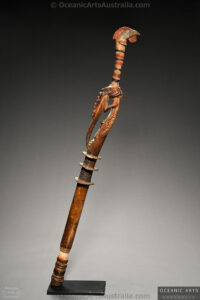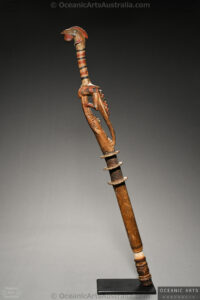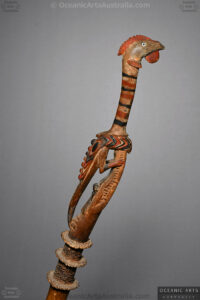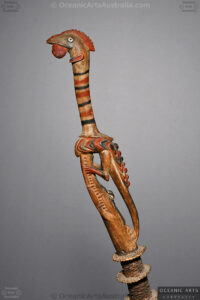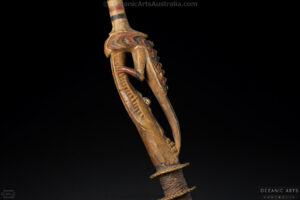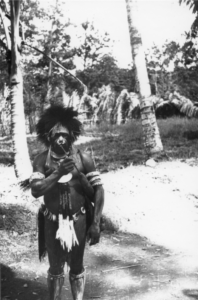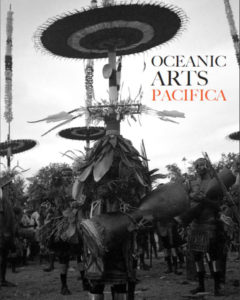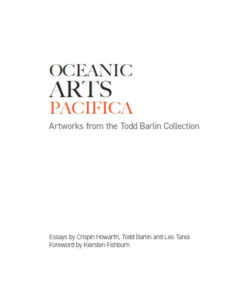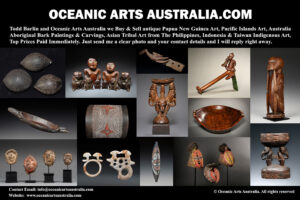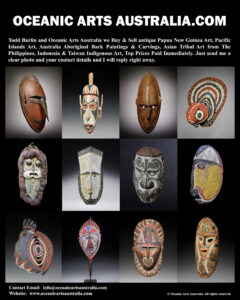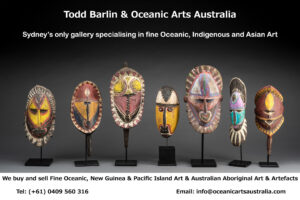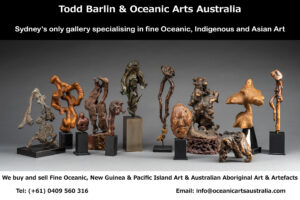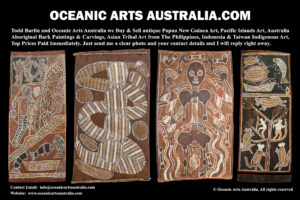A Superb Old New Guinea Ceremonial Lime Container Middle Sepik River Papua New Guinea
| Collection No. | TB-2768 |
|---|---|
| Size | Height 83cm or 23.6 Inches |
This Superb Ceremonial Lime Container from the Iatmul People in the middle Sepik River area of the East Sepik Province in Papua New Guinea.
Ceremonial Lime Containers like this example are called “Bandi Na Iavo “in the Iatmul Language. The Iatmul people and most people in the Sepik River area chew betel nuts from the Areca Palm. Betel is chewed with lime made from burnt and crushed seashells and mustard leaves (Piper sp). Chewing Betel nut is a mild stimulant such as smoking or coffee & people use it throughout their lifetime.
This type of finely carved Ceremonial Lime Container was presented to newly initiated boys by their maternal uncles to mark their newly achieved status as men. It was used to chew betel during important traditional ceremonies.
The Lime Container finial is adorned with important clan ancestral totems, in this example, the finial is a rooster – a bird admired in the Sepik for both its brilliant plumage and sexual vigor, here, the bird balances on the head of a crocodile, an important ancestral totem
The tops of these containers have a hole for the insertion of the lime spatula to get lime from the container and into one’s mouth to mix with the betel nut. The Spatula that was used often has carved ridges all down its length & when used men can stick the spatula into the Lime Container making a loud scraping percussion noise that is thought to be the voices of ancestral spirits.
Sepik River artists have produced some of the most beautiful & imaginative artworks ever made by any culture. When you see these artworks well displayed in the homes of collectors or in the vast space for Oceanic Art at The Metropolitan Museum of Art in New York or at The Musee du Quai Branly in Paris they are outstanding.
For a similar Iatmul Ceremonial Lime Container with the same iconography see the Metropolitan Museum of Art, they date theirs to 19th to early 20th Century https://www.metmuseum.org/art/collection/search/313645
Provenance: Collected before 1940. The Todd Barlin Collection of Oceanic Art

